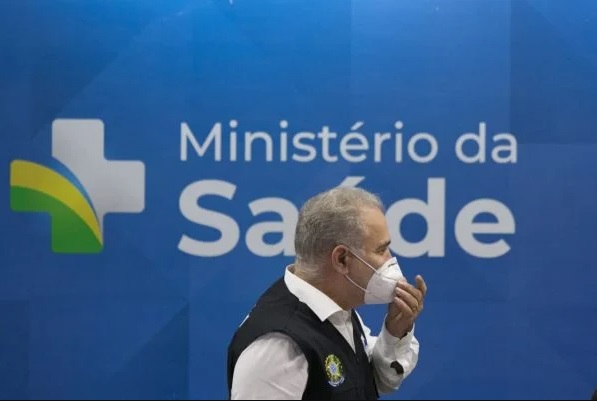The Ministry of Health started a new Influenza vaccination campaign Last week, this time around, children aged 6 months to 5 years are encouraging health workers to take advantage of visiting sites for a measles vaccination update, too.
The Measles is a serious infectious disease caused by a virus measles virus, which has spread to three Brazilian states (Amapa, São Paulo and Parana). The disease mainly affects children, but it can also harm the health of adolescents and adults.
Infectologist Anna Helena Germoglio explains that cross-vaccination – when two vaccines are applied – is a safe and frequently used strategy.
“It is not necessary to take a break between vaccinations. This is a strategy widely used in campaigns: take advantage of the fact that the person has already arrived in the mail and update the vaccination card,” says Germoglio.
Following the same reasoning, anyone with any dose of the Covid-19 vaccine on hold can also take it during the flu and measles vaccination drive, which runs through June 3.
contraindications
Vaccination is not recommended for people with symptoms of Covid-19 or Diagnosed with the disease in the last 30 days. In this case, the tendency is for the patient to return to the health center a month after the symptoms have ended.
“We do not recommend vaccinations for people with fever, especially children. This can lead to a deterioration of the clinical picture, and erroneously, attributable to vaccination,” the infectious disease specialist explains.
See the list of dates and groups indicated for the vaccination campaign against influenza and measles:
Phase One – April 4 to May 2:
- Older adults 60 years and over (influenza). And
- Health workers (influenza, measles).
Phase Two – May 2 to June 3:
- Children 6 months to less than 5 years (4 years, 11 months and 29 days) (influenza, measles);
- pregnant women and women after childbirth (influenza);
- indigenous peoples (influenza);
- teachers (flu);
- people with comorbidities (influenza);
- Persons with permanent disabilities (influenza);
- professionals from the security and rescue forces and the armed forces (influenza);
- Truck drivers and workers of mass road transport of urban and long distances to passengers (influenza);
- port workers (influenza);
- prison system officials (influenza);
- Adolescents and young adults from 12 to 21 years of age who are subject to social and educational measures (influenza);
- Population deprived of their liberty (influenza).
 3 cards_view_of_photos (9)
3 cards_view_of_photos (9)The Covid-19 self-test is a rapid antigen test that a person can do themselves by collecting the substance in the nose with a cotton swab. The result appears within 15 to 20 minutes and is indicated for those who show the first symptoms of the disease.Getty Images
 *** Ministry of Health
*** Ministry of HealthThe Covid self-test has been used in several countries, and it is on Anvisa’s agenda to be released in Brazil in January. According to the Ministry of Health, this type of testing could be important to help control the coronavirus. Raffaella Feliciano / Metropolis
 *** Self-test for COVID-19 step by step
*** Self-test for COVID-19 step by stepIn the face of his imminent release, many people in Brazil still do not know how the test works or how to perform it.whitbalance.oatt / Getty Images
 *** Self-test for COVID-19 step by step
*** Self-test for COVID-19 step by stepThe Covid self-test is nothing more than a test capable of looking for proteins characteristic of the surface of the coronavirus. The test consists of antibodies capable of identifying these proteins. When found, it gives positiveVioletaStoimenova/Getty Images
 *** Self-test for COVID-19 step by step
*** Self-test for COVID-19 step by stepIn the event that the result is negative and the person has symptoms characteristic of infection with the virus, experts say that it is necessary to continue the investigation, especially if the patient has been in contact with another infected person.VioletaStoimenova/Getty Images
 *** Self-test for COVID-19 step by step
*** Self-test for COVID-19 step by stepAlthough there are many brands of self-tests for Covid, the step-by-step is the same for most home tests to detect the disease.John Challicum/Getty Images
 *** Self-test for COVID-19 step by step
*** Self-test for COVID-19 step by stepFor greater effectiveness, hands must be properly sanitized.Mike Kemp / Getty Images
 *** Self-test for COVID-19 step by step
*** Self-test for COVID-19 step by stepThe kit comes with a cotton swab, a small tube, aqueous solution and a test strip.VioletaStoimenova/Getty Images
 *** Self-test for COVID-19 step by step
*** Self-test for COVID-19 step by stepIf two red lines appear, one next to each letter, you have tested positive for coronavirus. If only a red line appears next to the letter C, then the result is negative. If no line appears or appears next to the letter T, the result is invalidErnesto R. Ageitos / Getty Images
 *** Self-test for COVID-19 step by step
*** Self-test for COVID-19 step by stepThe entire procedure is simple and only takes a few minutes. The brands guarantee an 85% effectiveness in detecting the virus. If it is approved in Brazil, it will be necessary to register the result with the SUS. To date, there is no definition regarding the use of self-test in the country. Anvisa asked the Ministry of Health for more data and postponed the decisionBoy_Anupong / Getty Images
0
